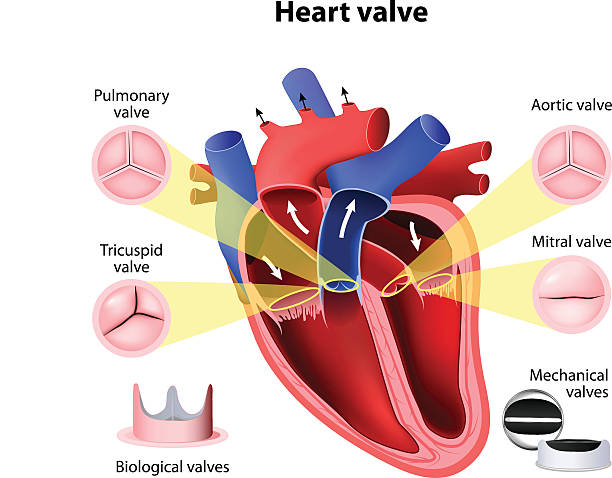
Diagnosed with Cancer? Your two greatest challenges are understanding cancer and understanding possible side effects from chemo and radiation. Knowledge is Power!
Learn about conventional, complementary, and integrative therapies.
Dealing with treatment side effects? Learn about evidence-based therapies to alleviate your symptoms.
Click the orange button to the right to learn more.
- You are here:
- Home »
- Blog »
- side effects ID and prevention »
- Ascending Aortic Aneurysm-
Ascending Aortic Aneurysm-

I have an ascending aortic aneurysm. Meaning, my ascending aorta (the one coming out of the heart, pumping blood downward) is enlarged. The article linked and excerpted below speaks to me big time. When do I treat?
My confounding factors are:
- I am a long-term cancer survivor who has sustained lots of cardiotoxic chemo-
- I’ve never been diagnosed but there is a lot of Marfan’s Syndrome in my family-
I have an echocardiogram every years. I take diagnostic testing seriously and I keep an eye on my heart. In fact, all of my heart health metrics have stablized or improved since 2015.
I admit to being extremely skeptical of conventional medicine. Ever since my chemotherapy-induced cardiomyopathy was diagnosed in December of 2010, cardiologists have pushed me to undergo conventional heart medications as well as heart surgery.
My original cardiologist prescribed metoprolol when I was first diagnosis. Within 24 hours of taking the drug I could barely breath. I undergo every evidence-based but non-conventional heart healthy therapy I can including:
- Daily, moderate exercise-
- Heart healthy diet- little alcohol, no tobacco-
- CoQ10-
- PQQ-
- ALA-
- Cocao-
- Omega-3 fatty acids-
- Taurine-
- DHEA
Yes, my AO measurements are over what is listed in the study below. But the measurements are stable and not growing, sometime even shrinking.
So when, if ever, do I treat my ascending aortic aneurysm? Scroll down the page, post your thoughts.
Thanks,
David Emerson
- Cancer Survivor
- Cancer Coach
- Director PeopleBeatingCancer
The ascending aortic aneurysm: When to intervene?
“Methodology- Literature was obtained through online health related search engines (PubMed, MEDLINE) by including the following keywords: ascending aorta aneurysm, thoracic aneurysms, Marfan syndrome, bicuspid aortic valve, familial thoracic syndrome, aortic dissection, aorta imaging and aortic aneurysm guidelines. We included articles dating from 1980 to 2014…
Conclusion-TAA is a silent disease that needs to be recognized early in its course and followed closely in order to recommend appropriate preventive and prophylactic therapy in a timely manner…
While the potential complications of aortic rupture and dissection are well recognized, most physicians are trained for the treatment of heart and coronary artery diseases, with limited knowledge and experience in the optimal management of patients with a dilated ascending aorta. The purpose of this article is to review the current understanding of the etiology, diagnosis, medical management and timing of surgical intervention in the patient with a dilated ascending aorta or ascending thoracic aortic aneurysm(TAA)…
Dilatation of the ascending aorta is a very indolent process as it takes many years to develop and it is asymptomatic initially. In patients who develop an ascending aortic aneurysm secondarily to a systemic disorder, signs of the primary disease are the ones who lead the clinician to look for the dilatation such as in Marfan syndrome. Otherwise, this pathology remains quiet until its catastrophic complications occur or when it is incidentally seen on cardiovascular imaging related to other causes. We can prevent these complications by screening asymptomatic patients. Feared events include aortic dissection or rupture, pericardial hemorrhage, cardiac tamponade and occlusion of aortic branches…
Natural history-Normal aorta grows slowly with age. From the Framingham Heart Study (echo sub-study), aorta diameter increases 0.1 cm per 10 years at the aortic root after the age of 25 [22]. Similar rate of growth is also observed for the tubular portion of the ascending aorta [23]. By the age of 75, normal ascending aorta diameter is approximately 3.6–3.7 cm for women (BSA: 1.95 m2) and 4.1–4.2 cm for men (BSA: 2.35 m2)…
Marfan syndrome- Marfan syndrome, first described by Antoine Marfan in 1896, is a connective tissue disorder with manifestations mainly involving the cardiovascular, respiratory, skeletal and ocular systems. It is caused by a mutation of the FBN-1 gene that is inherited in an autosomal dominant pattern, although, 25% of cases seem to be sporadic. While Marfan syndrome predisposes to many other conditions, its most serious complications are related to aortic valve regurgitation and ascending root dilatation. Aortic dissection constitutes the most common cause of death in these patients. Up to 80% of patients with Marfan syndrome have ascending TAA dilatation [32]..
Different studies have tried to establish the growth rate of the ascending aorta in these patients. As shown in Table 4, the results varied widely, ranging from 0.027 cm per year up to 0.2 cm per year. The largest study on this issue (n = 762) by Jondeau et al. shows that mean annual ascending aorta growth rate is 0.050 +/− 0.089 cm [34]. It has also been noted in certain studies that there are two specific subsets of patients in terms of growth rate: fast growers and slow growers…
Higher diastolic and systolic blood pressure, older age and larger initial aorta size were all associated with being a “fast grower” as shown in another related study by Lazarevic et al. [35] and they were associated with a higher rate of complications which are: aortic dissection, aortic regurgitation and death…
My Echocardiogram Results from 2015-2021
- BP.
- left ventricle systolic function EF
- left atrium
- right atrium
- Aortic root-
- Ascending Aorta
All have improved-
- 6/2021 BP- 109 /65 mmHg
- 2/2020 BP –109 /65 mmHg
- 10/2018- BP -126 /82 mmHg
- 9/2016- BP –125 /80 mmHg
- 10/2015-BP –114 /69 mmHg
6/2021 Left Ventricle: The left ventricular systolic function is low normal, with an estimated ejection fraction of 50-55%.
2/2020- Left Ventricle: The left ventricular systolic function is low normal, with an estimated ejection fraction of 50-55%.
10/2018- Left Ventricle: The left ventricular systolic function is mildly decreased, ejection fraction of 40-45%.
9/2016- Left Ventricle: The left ventricular systolic function is mildly to moderately decreased, with an estimated ejection fraction of 40-45%.
10/2015-The left ventricular systolic function is mildly decreased, with an estimated ejection fraction of 40-45%.
- 6/2021 Left Atrium: The left atrium is normal in size.
- 6/2021 Right atrium is upper limits of normal in size
- 2/2020- Left Atrium: The left atrium is severely dilated.
- 2/2020- Right Atrium: The right atrium is moderately dilated.
- 10/2018- Left Atrium: The left atrium is severely dilated.
- 10/2018- Right Atrium: The right atrium is mildly dilated
- 9/2016- Left Atrium: The left atrium is moderate to severely dilated.
- 9/2016 – Right Atrium: The right atrium is mildly dilated
- 10/2015- Left Atrium: The left atrium is mildly dilated
- 10/2015 – The right atrium is normal in size.
- 6/2021- Ao Root d: 5.10 cm
- 6/2021- Asc Ao, d: 4.60 cm
——–
- 2/2020- Ao Root-?
- 2/2020-Asc Ao, d: 4.60 cm
——–
- 10/2018- Ao Root: 4.40 cm
- 10/2018-Asc Ao, d: 4.60 cm
——–
- 09/2016- Ao Root- 4.3 cm
- 09/2016 – Asc Ao- 4.9 cm
——————
- 10/2015- Ao Root: 5.30 cm
- 10/2015– Asc Ao- 4.80 cm
2/2020 The aortic root is abnormal. There is moderate dilatation of the ascending aorta. There is severe dilatation of the aortic root.
10/2018- The aortic root is abnormal. There is moderate dilatation of the ascending aorta. There is moderate dilatation the aortic root.
09/2016- The aortic root is abnormal. There is moderate dilatation of the ascending aorta. There is severe dilatation of the aortic root.
10/2015- The aortic root is abnormal. There is moderate dilatation of the ascending aorta. There is severe dilatation of the aortic root. Maximal diameter of aortic root is 5.3 cm


